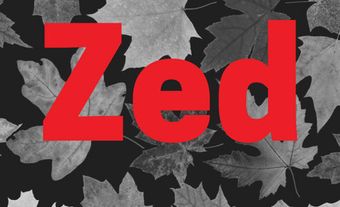Celtic Languages
The Celtic languages belong to the family of languages known as Indo-European and as such are related to most of the languages of Europe and many others found as far east of Europe as India. Linguists recognize 2 main divisions of Celtic: Continental Celtic and Insular Celtic.
Continental Celtic
By about 300 BC Continental Celtic was spoken over a vast area of Europe, stretching, in modern terms, from western France eastward into Turkey. Specific evidence for the forms of Continental Celtic come especially from Gaul but also from Northern Italy and the Iberian Peninsula. However, with the expansion of the Roman Empire from the 3rd century BC, Latin (mainly) gradually replaced Continental Celtic, with the process being complete almost everywhere by the 2nd century AD (although some Celtic may have lingered on in the Swiss mountains as late as the 5th century AD).
Insular Celtic
Insular Celtic was spoken in Ireland and the British Isles from the arrival of the Celts there about the 4th century BC. It also includes Breton, which was introduced to Brittany from southwest Britain during the 4th-6th centuries AD. Insular Celtic divides into 2 main branches which are conveniently known as Q-Celtic and P-Celtic (a distinction which seems to have existed in Continental Celtic). Insular Q-Celtic consists of Scottish Gaelic, Irish Gaelic and Manx Gaelic, all 3 of which have evolved from Old Irish, whilst Insular P-Celtic includes Welsh, Breton and Cornish, and historically Cumbrian and Celtic Pictish, since the ancient Picts of northern Scotland appear to have spoken more than one language. This terminology was inspired by the fact that Q-Celtic preserved an older kw sound (written as q in the ancient Gaelic Ogham script and c in modern Gaelic), where P-Celtic developed a p sound; for instance, the Gaelic mac ("son") corresponds to Old Welsh map, and Old Gaelic cenn ("head") to Welsh pen.
Cornish, Manx and Other Languages
Cornish died out by the 18th century and Manx in the latter half of the 20th century, although in both Cornwall and the Isle of Man there has been a revival, and a number of enthusiasts can now speak these languages. The other languages are still spoken and census questions in Britain and Ireland provide valuable data on actual numbers. There are about 70 000 Gaelic speakers in Scotland, and approximately 1.4 million Irish who speak or understand the language. Welsh is in better numerical shape, with over 500 000 native speakers. No reliable statistics exist for Breton - estimates vary wildly from 20 000 to 700 000.
Celtic Languages in Canada
In Canada only the Highland SCOTS and the WELSH managed to establish colonies where their native language survived late into the 20th century. Scottish Gaelic colonies established themselves in Cape Breton and 3 eastern counties of Nova Scotia (Guysborough, Pictou and Antigonish), in Prince Edward Island, in the Codroy Valley in southwest Newfoundland, in Compton County, Québec, in southern Ontario (Stormont, Dundas and Glengarry counties southeast of Ottawa, and in Middlesex County west of London), and on each side of the Manitoba-Saskatchewan border.
CAPE BRETON is now probably the only area in Canada where Gaelic speakers can be found in any large number, and there one can only speak of perhaps a thousand or fewer. Two Welsh colonies had less than 100 elderly (mainly) and middle-aged Welsh-speakers between them according to a survey done in 1974: Ponoka in Alberta and Bangor in Saskatchewan. Some of these speakers were the descendants of Welsh colonists who had originally settled in Patagonia, Argentina.
People speaking one or other of the 4 main Celtic languages can be found in many Canadian cities and towns, with Montréal being the centre of a relatively small number of Breton speakers. Recent keen interest in Celtic culture has manifested itself by the establishment of a chair of Celtic studies at the University of Ottawa; a chair of Gaelic studies at St Francis Xavier University, Antigonish, NS; a chair of Irish studies at St Mary's U, Halifax; and a program of Celtic studies at St Michael's College at U of T.
See also LANGUAGE.

 Share on Facebook
Share on Facebook Share on X
Share on X Share by Email
Share by Email Share on Google Classroom
Share on Google Classroom

